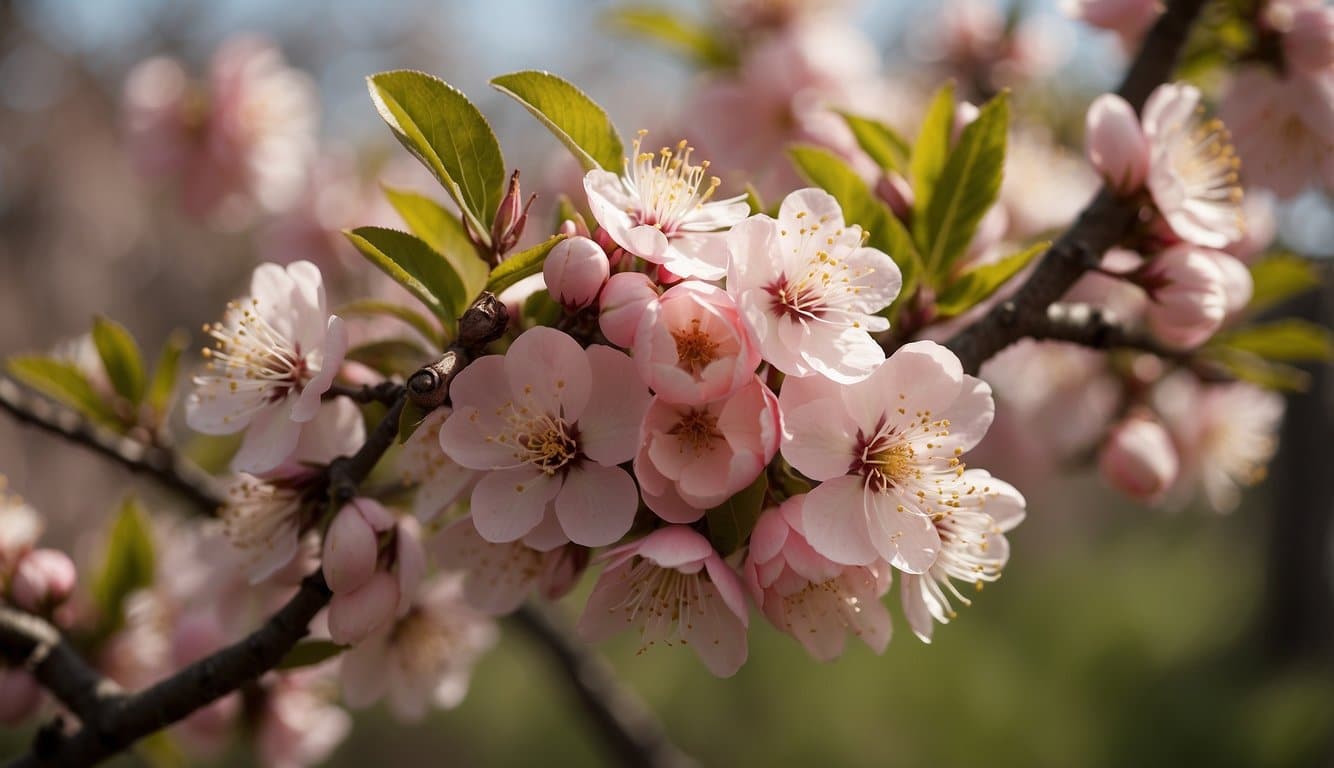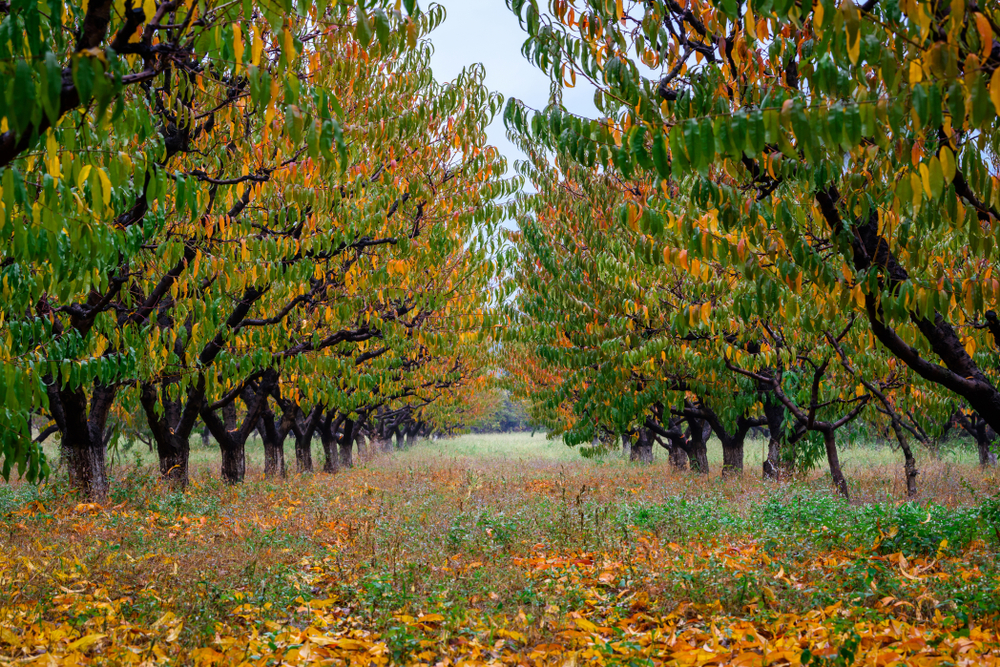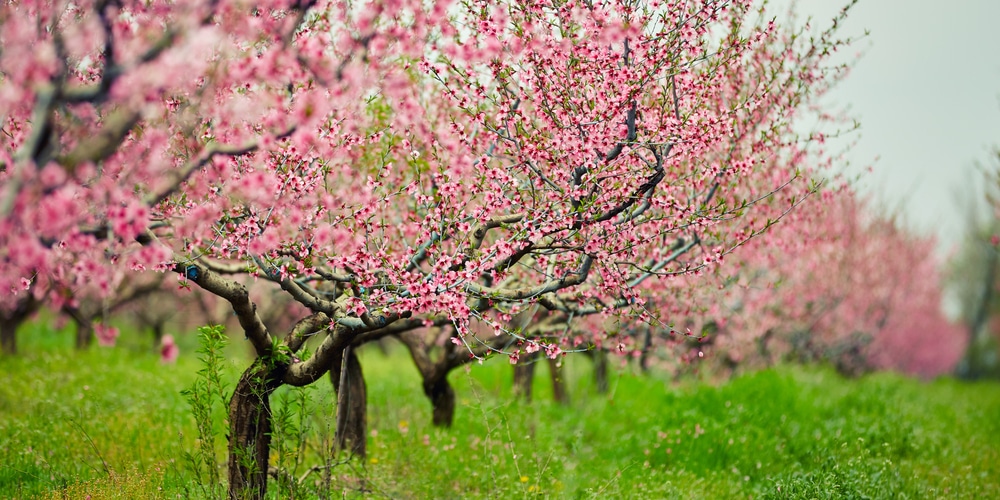| Question | Are Peach Trees Self-Pollinating? |
|---|---|
| Answer | Yes, They Generally Self-Fertilize |
| More Info | Most peach tree varieties are self-fertile, meaning they can pollinate themselves without the need for pollen from another tree. However, having more than one tree can improve fruit production due to better cross-pollination. It’s important to choose a variety suited to your climate and to provide proper care, including adequate sunlight, water, and soil nutrients, to ensure a healthy and productive peach tree. |
When planning to grow peach trees in your garden, understanding the pollination process is crucial for a successful harvest.
Peach trees are predominantly self-pollinating, which means they have the ability to fertilize their own flowers with their own pollen. This feature simplifies the cultivation process, as you can plant a single peach tree and still expect it to set fruit.
However, some varieties may benefit from cross-pollination. This involves the transfer of pollen from the flowers of one peach tree to another, which can potentially improve the size and quality of the fruit.
To facilitate this, planting another peach tree within proximity could increase your chances of a more bountiful peach harvest.
Peach Trees and Pollination: The Basics
When you’re cultivating peach trees, understanding the basics of pollination is crucial.
Peach trees are predominantly self-pollinating, which means that their flowers contain both male and female parts, allowing a single tree to bear fruit on its own. However, certain factors can enhance the pollination process and fruit quality.
Key Points for Effective Self-Pollination:
- Flower Anatomy: Each flower harbors the necessary components for self-pollination.
- Pollinators Role: Though not required, bees and other pollinators can increase the chances of successful pollination.
- Tree Health: A healthy tree, free from stress and disease, is more likely to produce well-pollinated flowers.
Peach trees require specific conditions to thrive and effectively pollinate:
- Sunlight: Full sun exposure is crucial.
- Spacing: Plant trees 18 to 20 feet apart to promote good airflow and sunlight penetration, as highlighted by Rennie Orchards.
- Soil pH: A pH level between 6.0 and 6.5 is ideal for nutrient absorption.
Proper care is essential for peach trees to ensure successful self-pollination.
Regular pruning for instance, doesn’t just influence the tree’s shape; it directly impacts light exposure and air circulation around the flowers critical for pollination, as advised in a guide from Tree Stop Secrets.
Factors Affecting Pollination in Peach Trees
Successful pollination in peach trees is essential to fruit development. This process can be influenced by the variety of the peach tree and environmental factors.
Varieties and Their Pollination Requirements
Certain peach tree varieties are described as self-pollinating. They possess both male and female parts within a single flower, allowing for the possibility of fruit production without the need for pollen from another tree.
For instance, the Elberta and Red Haven varieties are noted for their ability to self-pollinate.
However, cross-pollination can enhance fruit set—the presence of pollinators and other peach tree varieties can increase the diversity and volume of peaches produced.
While a majority of peach trees are self-sufficient, they may still benefit from the presence of other peach trees for optimized pollination and fruit yield.
Environmental Influences on Pollination
Pollination can be strongly affected by climate and weather conditions.
Optimal conditions for peach tree pollination include:
- Temperate Weather: Cold snaps can damage blossoms, while overly wet conditions can hamper pollinator activity.
- Pollinator Presence: Bees are the primary pollinators for peach trees, and their activity is crucial. Environments supportive of bee populations will facilitate better pollination.
- Pruning Practices: Appropriate pruning ensures good airflow and light penetration, which are vital for healthy flower development and accessible pollination sites.
Cultivation Practices to Enhance Pollination
When cultivating peach trees, certain practices can significantly boost pollination rates.
Appropriate tree spacing and regular pruning are fundamental for healthy growth and fruit production.
Tree Spacing for Optimal Pollination
Your peach trees can thrive with the right amount of space. Proper spacing helps ensure adequate air circulation and sunlight exposure, which are crucial for pollination.
For dwarf peach tree varieties, spacing of about 8 feet apart is optimal, as it allows bees and other pollinators to effortlessly move between the flowers.
For standard peach trees, consider spacing them 15 to 20 feet apart. This spacing promotes healthier trees and better pollination outcomes.
Pruning for Pollination Efficiency
Pruning plays a direct role in enhancing pollination. By pruning your peach trees, you open them up to more sunlight and better air flow, which facilitates the work of pollinators.
Here’s a quick guide to pruning:
- Winter Pruning: Helps shape the tree and encourages strong growth in spring.
- Summer Pruning: Removes excess growth and improves air and light penetration.
Keep your cuts clean and focus on removing dead or diseased wood and thinning out crowded branches.
This approach not only helps with the health of your tree but also makes it easier for pollinators to access flowers, impacting your tree’s fruiting capability positively.
Frequently Asked Questions
In this section, you’ll find answers to common queries regarding the pollination of peach trees, crucial for your tree to bear fruit.
What are the pollination requirements for peach trees?
Peach trees need pollen to be transferred from the male parts to the female parts of flowers within the same variety to set fruit. Bees are primary pollinators, assisting in this essential process.
Can peach trees produce fruit without another tree for cross-pollination?
Yes, peach trees are generally self-pollinating and do not require another tree for cross-pollination to produce fruit. Your peach tree’s flowers contain both male and female parts, enabling them to self-pollinate.
Must peach trees be planted in pairs for successful pollination?
No, it is not necessary to plant peach trees in pairs since most are self-pollinating and capable of producing fruit on their own.
Which varieties of peach trees are known to be self-fertile?
There are numerous self-fertile peach tree varieties, including the Bonanza Peach Tree, which is a dwarf peach variety that can set fruit by itself.
What is the impact of pollination on peach tree fruit production?
Adequate pollination is directly linked to the fruit production of peach trees. If pollination occurs effectively, it leads to well-developed and abundant peach crops.
How can one ensure proper pollination if they have only one peach tree?
Even with a single tree, you can ensure proper pollination by encouraging the presence of pollinators like bees to your garden.
You can also hand pollinate if necessary, to maximize your peach tree’s fruiting potential.
Last update on 2025-04-18 / Affiliate links / Images from Amazon Product Advertising API





